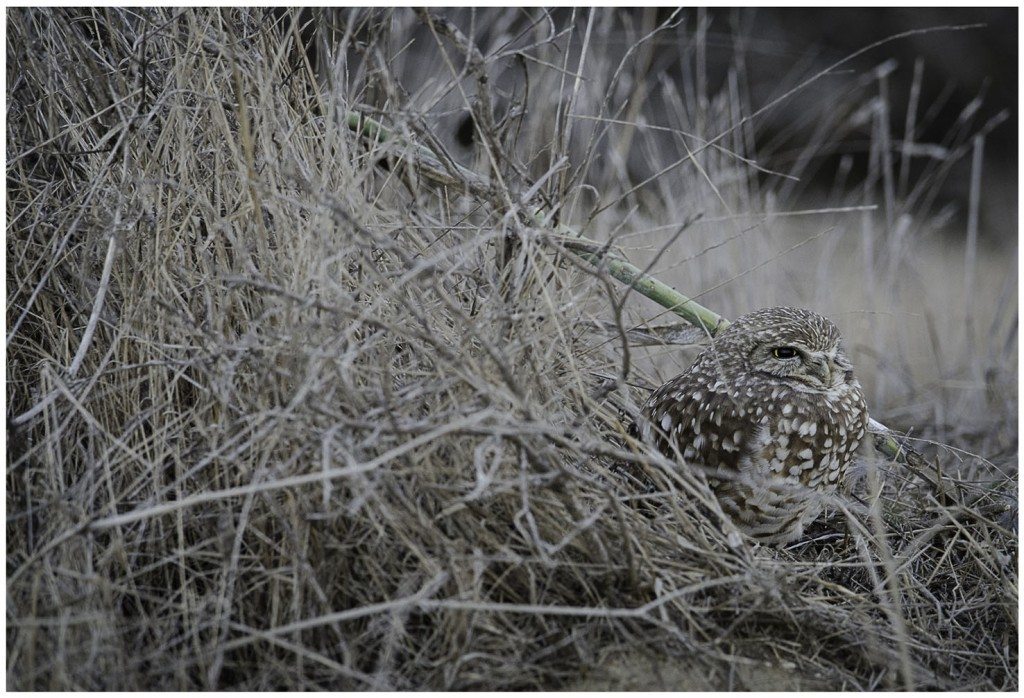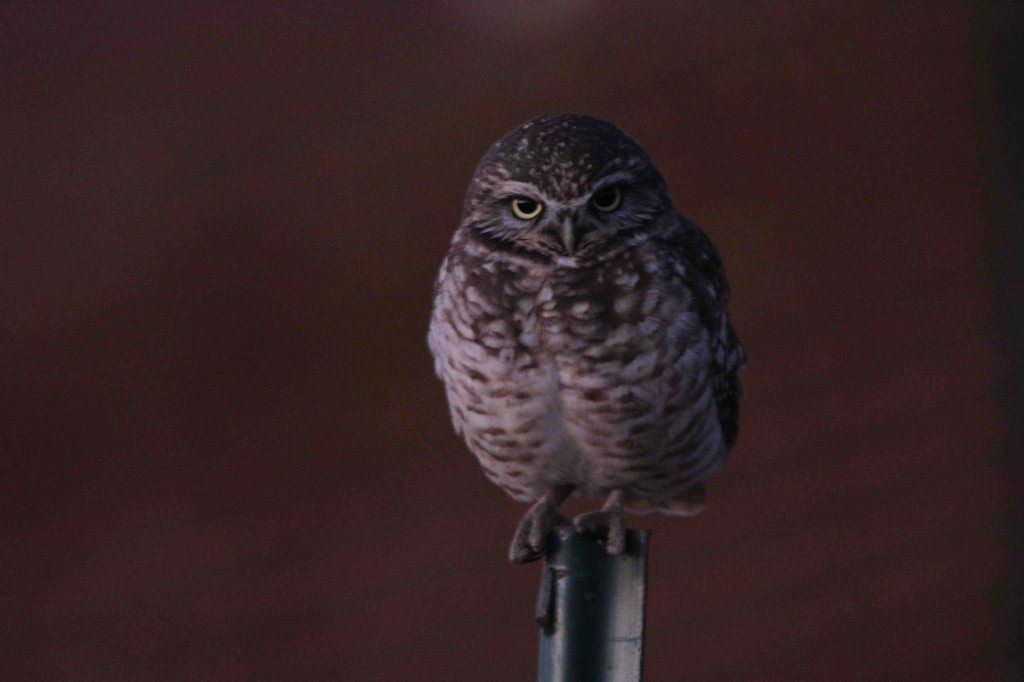New docent, returning owls
By Raunak Bhinge
In spite of the large number of people using Cesar Chavez Park at the Berkeley Marina, the Burrowing Owls have again returned to winter in the northeast corner of the park. Just one day after Golden Gate Bird Alliance’s Burrowing Owl docent training session in late September, our youngest docent (age nine) spotted the first owl of the season.
All the new docents – including me – flocked to the park’s Art Installation Area to spot the new “Art” owl and talk about it to the public. The second owl flew in more than a month later. Currently there are three owls, two at the Art Installation and one closer to I-80 near the Tom Bates soccer fields.
Many regular park visitors are aware of the wintering Burrowing Owls and start looking for the feathered arrivals each October. Other people read the signs that describe the owls and look for them but don’t see them. Still others walk past the Art Installation without knowing anything about our owl visitors. When docents are present, they provide these people with stunning views of the owls through scopes, binoculars and powerful cameras.


November had many cold wintry days, and the gusty breeze at the marina only escalated the chill. The owls hunkered down in their burrows, almost invisible to most of the regular “owl spectators.” On some of the warmer days, the Art-area owl made brave appearances into the open, dancing along the northern rip-rap and foraging for rodents during the day. Those lucky enough to witness the owl in action went home with memories to cherish.
Shortly into this year’s docent season, we received some inspiring news. Last year, an injured owl had been found near Aquatic Park in Berkeley. It was taken to the Lindsay Wildlife Museum, where radiographs confirmed a simple, mid-diaphyseal fracture of the left humerus. The fracture was pinned and wrapped. After a month of rehabilitation, the bird was banded and released at Chavez Park.
Recently Jay Holcomb at International Bird Rescue told us that this bird had been discovered alive and healthy in June by researcher Jamie Groves near Kuna, Idaho – more than 600 miles from Berkeley!
Jamie, who is studying parental/nesting behavior in Burrowing Owls for a master’s degree in Raptor Biology at Boise State University, wrote:
I banded this female, as well as her mate and their 7 nestlings (about 4 weeks old at banding). She was nesting in one of the artificial burrows that had been placed in the area some time ago. The nestlings were in really good shape, and from what I recall/see in my notes the female was in great shape as well.
We were delighted to find “our” injured owl alive and thriving, as well as to learn a little bit more about where Burrowing Owls go to nest when they leave their wintering grounds in the Bay Area.

This year, Golden Gate Bird Alliance’s docent program has been expanded beyond Cesar Chavez Park to the entire East Bay shoreline, ranging from Point Pinole in the north to Coyote Hills in the south. The first Burrowing Owl to appear away from the Berkeley Marina was a plump little one at the artificial mounds of Martin Luther King Jr. Shoreline, near Arrowhead Marsh. Those who frequent the marsh describe her as the “Mound 1 Owl”; she appeared just a week after the first Burrowing Owl sighting at the Art Installation. Safely tucked away in her burrow protected by fences, we hope that Mound 1 Owl will have a pleasant winter vacation before she heads back north in early spring.
One docent has been scouring Coyote Hills for Burrowing Owls, while other docents are looking elsewhere in order to document new owls along the East Bay shoreline. It has just been over a month into the program and the docent group list-serv has been buzzing with excitement and detailed descriptions of the owls’ activities during the docent visits. The Art Installation owls are covered by a docent for an hour or so almost every day.
Throughout the past five years that I’ve spent birding, I have been enraptured by nature and the sheer complexity and diversity of species. I have birded, enjoyed, and explored forests across India and now California, but I never had the chance to give back in return. Species like the Burrowing Owl continue to dwindle in numbers, while numerous species are on the brink of extinction across the world. It was through Golden Gate Bird Alliance that I finally saw my opportunity to give back to nature, and signed up for the Burrowing Owl Docent Program.
As a birder coming from India, such enthusiastic docent participation and the high local awareness of a single species leave me amazed at the impact of Golden Gate Bird Alliance’s conservation efforts.
Even with these efforts, though, the fate of over-wintering Burrowing Owls in the Bay Area is uncertain. The Burrowing Owl docents continue to look for ways to improve the owls’ chances of spending a safe winter here and returning to their breeding grounds each spring.
—————————————-
Raunak Bhinge is a visiting birder from India who is spending four years at U.C. Berkeley doing his PhD in Intelligent Manufacturing at the Laboratory of Manufacturing and Sustainability. He is also an active participant in Golden Gate Bird Alliance’s Burrowing Owl Docent Program.
